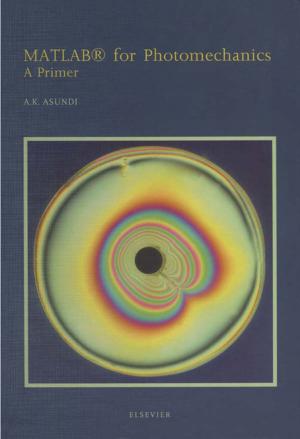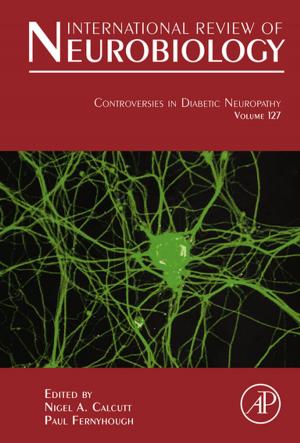Nanostructured Semiconductors
Nonfiction, Science & Nature, Technology, Electronics, Semiconductors, Material Science| Author: | Serge Zhuiykov | ISBN: | 9780081019207 |
| Publisher: | Elsevier Science | Publication: | January 2, 2018 |
| Imprint: | Woodhead Publishing | Language: | English |
| Author: | Serge Zhuiykov |
| ISBN: | 9780081019207 |
| Publisher: | Elsevier Science |
| Publication: | January 2, 2018 |
| Imprint: | Woodhead Publishing |
| Language: | English |
Nanostructured Semiconductors focuses on the development of semiconductor nanocrystals, their technologies and applications, including energy harvesting, solar cells, solid oxide fuel cells, and chemical sensors. Semiconductor oxides are used in electronics, optics, catalysts, sensors, and other functional devices. In their 2D form, the reduction in size confers exceptional properties, useful for creating faster electronics and more efficient catalysts.
Since the first edition of the book, there has been significant progress in the development of new functional nanomaterials with unique and sometimes unpredictable quantum-confined properties within the class what it called two-dimensional (2D) semiconductors. These nanocrystals represent extremely thin nano-structures with thickness of just few nano-meters. Since that time, not only were 2D semiconductor oxides further developed, more importantly, 2D metal dichalcogenides, such as MoS2, MoSe2, WS2, WSe2 and others also progressed significantly in their development demonstrating their superior properties compared to their bulk and microstructural counterparts. The book has been expanded to include these advancements.
The book begins with the structure and properties of semiconductor nanocrystals (chapter 1), addresses electronic device applications (chapter 2), discusses 2-Dimensional oxides and dichalcogenide semiconductors (chapters 3 through 5), and ends with energy, environment, and bio applications (chapters 6 through 8).
- Focuses on the development of semiconductor nanocrystals and their technologies and applications, including energy harvesting, solar cells, solid oxide fuel cells and chemical sensors
- Include other 2D materials, such as dichalcogenides to present a comprehensive resource on the latest advancements in nanostructured semiconductors
- Reviews the fundamental physics of conductivity and electron arrangement before proceeding to practical applications
- Contains a unique chapter dedicated to the new atomic layer deposition (ALD) technique which has the ability to develop 2D nanostructures with great precision
Nanostructured Semiconductors focuses on the development of semiconductor nanocrystals, their technologies and applications, including energy harvesting, solar cells, solid oxide fuel cells, and chemical sensors. Semiconductor oxides are used in electronics, optics, catalysts, sensors, and other functional devices. In their 2D form, the reduction in size confers exceptional properties, useful for creating faster electronics and more efficient catalysts.
Since the first edition of the book, there has been significant progress in the development of new functional nanomaterials with unique and sometimes unpredictable quantum-confined properties within the class what it called two-dimensional (2D) semiconductors. These nanocrystals represent extremely thin nano-structures with thickness of just few nano-meters. Since that time, not only were 2D semiconductor oxides further developed, more importantly, 2D metal dichalcogenides, such as MoS2, MoSe2, WS2, WSe2 and others also progressed significantly in their development demonstrating their superior properties compared to their bulk and microstructural counterparts. The book has been expanded to include these advancements.
The book begins with the structure and properties of semiconductor nanocrystals (chapter 1), addresses electronic device applications (chapter 2), discusses 2-Dimensional oxides and dichalcogenide semiconductors (chapters 3 through 5), and ends with energy, environment, and bio applications (chapters 6 through 8).
- Focuses on the development of semiconductor nanocrystals and their technologies and applications, including energy harvesting, solar cells, solid oxide fuel cells and chemical sensors
- Include other 2D materials, such as dichalcogenides to present a comprehensive resource on the latest advancements in nanostructured semiconductors
- Reviews the fundamental physics of conductivity and electron arrangement before proceeding to practical applications
- Contains a unique chapter dedicated to the new atomic layer deposition (ALD) technique which has the ability to develop 2D nanostructures with great precision















